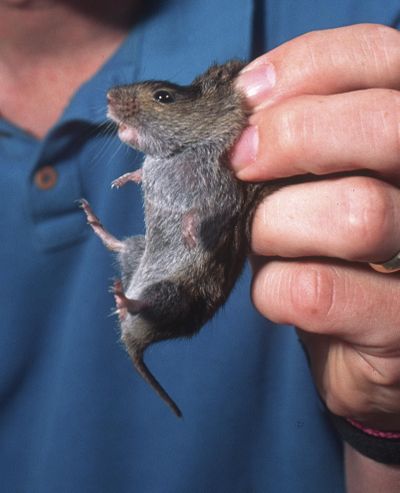Gardening: Protect against voles, found in large numbers this year

Is it a mouse, a shrew or a vole? Gardeners seem to be overrun with them this year. So, how do you tell the difference? And how do you keep their numbers down?
Mice are commonly attracted to the buffet of dog and cat food, chicken scratch, sweet COB and other delicacies we leave out around our homes and farms. Their bodies are about 5 inches to 7 inches long with a 3- to 4-inch tail. They have large ears and small but prominent black eyes. They are gray to light brown and have a musky odor. In general, they are active at night, which makes them hard to find.
Voles are of the most concern to gardeners. Related to mice, they enjoy more than their fair share of small plants and can girdle small trees and chew up root systems, bulbs and fruit. Often the worst of their root and bulb chewing and tree girdling is done in the winter under the snow and only becomes evident in the spring after the snow melts.
Voles can be larger than mice but have smaller ears and eyes, more compact bodies, short, hairy tails and rounder heads. They are often referred to as meadow mice or field mice. Voles prefer dense, heavy vegetative cover, weeds and meadows because it provides them with protection from predators and provides nesting material.
Shrews are related to moles and are more interested in insects, worms and the occasional seed or nut. They spend their time rooting around in leaf litter and dense vegetation looking for food. They are much smaller than mice or voles and have long, sensitive whiskers and a long snout that overhangs the lower lip. Like moles, they have small eyes and ears and large incisor teeth that easily grab their meals. Their bodies are cylindrical with slender, short limbs with claws used for digging. Their fur is a soft gray color and the tail is generally very short. They live in burrows for breeding and safety. Fortunately, they generally don’t cause enough of a problem in the garden to warrant controlling.
Controlling mice and voles can be a challenge. Because mice are often found in and around buildings, snap and live traps are effective in reducing the numbers. Peanut butter is the best bait for either trap. Mice often create runways, so set a trap close by. Don’t use baits if you have animals who might eat the dead mice.
Our mild early winter followed by deep protective snow has led to a vole population explosion this spring. Because voles prefer fields and gardens, reducing their preferred habitat is the best offense. Remove piles of brush and firewood. Mow areas between your garden and open fields to remove their cover. Trim up shrubs to remove hiding places. Wrap the base of trees with a fine wire mesh or tree guard. Plant bulbs in wire baskets. Attract predators, like cats and dogs, hawks, owls and other raptors. Again, use baits only as a last resort.